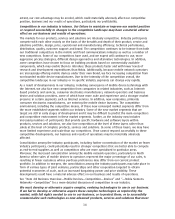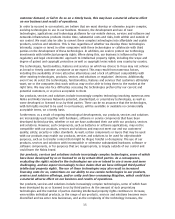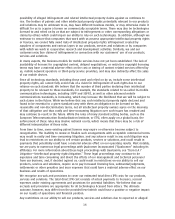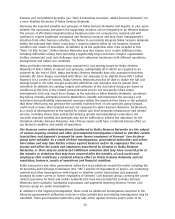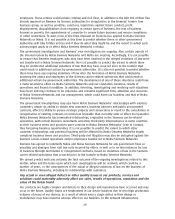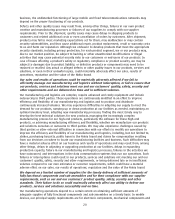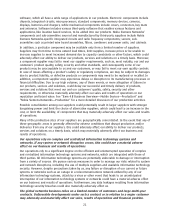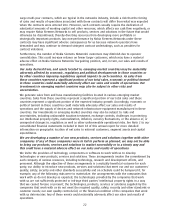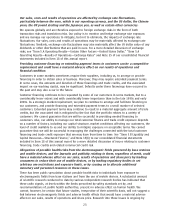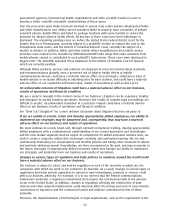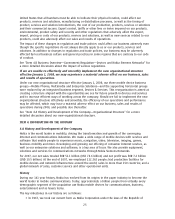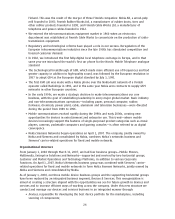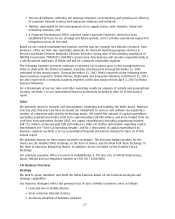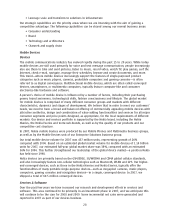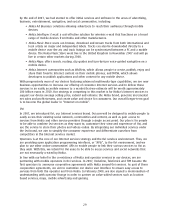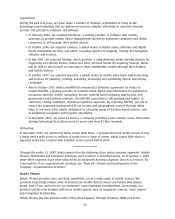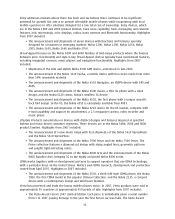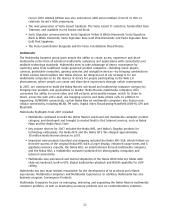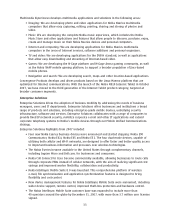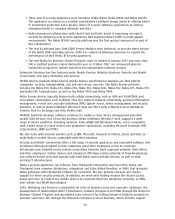Nokia 2007 Annual Report Download - page 25
Download and view the complete annual report
Please find page 25 of the 2007 Nokia annual report below. You can navigate through the pages in the report by either clicking on the pages listed below, or by using the keyword search tool below to find specific information within the annual report.government agencies, international health organizations and other scientific bodies in order to
develop a better scientific and public understanding of these issues.
Over the past seven years Nokia has been involved in several class action matters alleging that Nokia
and other manufacturers and cellular service providers failed to properly warn consumers of alleged
potential adverse health effects and failed to package headsets with every handset to reduce the
potential for alleged adverse health effects. All but two of these cases have been withdrawn or
dismissed. The remaining pending cases are before the United States Federal District Court for the
Eastern District of Pennsylvania, currently subject to a plaintiffs’ motion to remand the case to the
Pennsylvania state courts, and the District of Columbia Superior Court, currently the subject of a
motion to dismiss. In addition, Nokia and other mobile device manufacturers and cellular service
providers were named in five lawsuits by individual plaintiffs who allege that radio emissions from
mobile phones caused or contributed to each plaintiff’s brain tumor. Those cases were dismissed in
August 2007. The plaintiffs appealed those dismissals to the District of Columbia Court of Appeals
which are currently pending.
Although Nokia products, services and solutions are designed to meet all relevant safety standards
and recommendations globally, even a perceived risk of adverse health effects of mobile
communications devices could have a material adverse effect on us through a reduction in sales of
mobile devices or increased difficulty in obtaining sites for base stations, and could have a material
adverse effect on our reputation and brand value, results of operations as well as share price.
An unfavorable outcome of litigation could have a material adverse effect on our business,
results of operations and financial condition.
We are a party to lawsuits in the normal course of our business. Litigation can be expensive, lengthy
and disruptive to normal business operations. Moreover, the results of complex legal proceedings are
difficult to predict. An unfavorable resolution of a particular lawsuit could have a material adverse
effect on our business, results of operations and financial condition.
See “Item 8.A.7 Litigation” for a more detailed discussion about litigation that we are party to.
If we are unable to recruit, retain and develop appropriately skilled employees, our ability to
implement our strategies may be hampered and, consequently, that may have a material
adverse effect on our business and results of operations.
We must continue to recruit, retain and, through constant competence training, develop appropriately
skilled employees with a comprehensive understanding of our current businesses and technologies
and the new market segments that we target. As competition for skilled personnel remains keen, we
seek to create a corporate culture that encourages creativity and continuous learning. We are also
continuously developing our compensation and benefits policies and taking other measures to attract
and motivate skilled personnel. Nevertheless, we have encountered in the past, and may encounter in
the future, shortages of appropriately skilled personnel, which may hamper our ability to implement
our strategies and materially harm our business and results of operations.
Changes in various types of regulation and trade policies in countries around the world could
have a material adverse effect on our business.
Our business is subject to direct and indirect regulation in each of the countries in which we, the
companies with which we work or our customers do business. As a result, changes in various types of
regulations and trade policies applicable to current or new technologies, products or services could
affect our business adversely. For example, it is in our interest that the Federal Communications
Commission maintains a regulatory environment that ensures the continued growth of the wireless
sector in the United States. In addition, changes in regulation affecting the construction of base
stations and other network infrastructure could adversely affect the timing and costs of new network
construction or expansion and the commercial launch and ultimate commercial success of these
networks.
Moreover, the implementation of technological or legal requirements, such as the requirement in the
24


